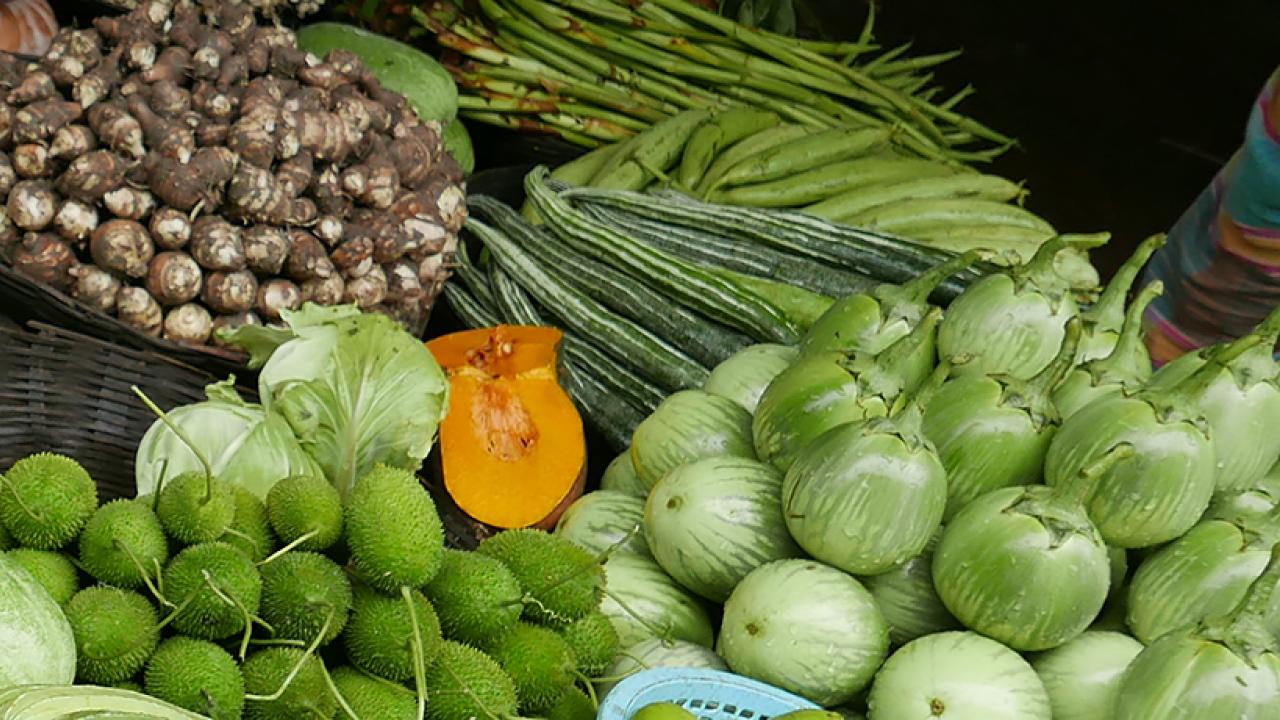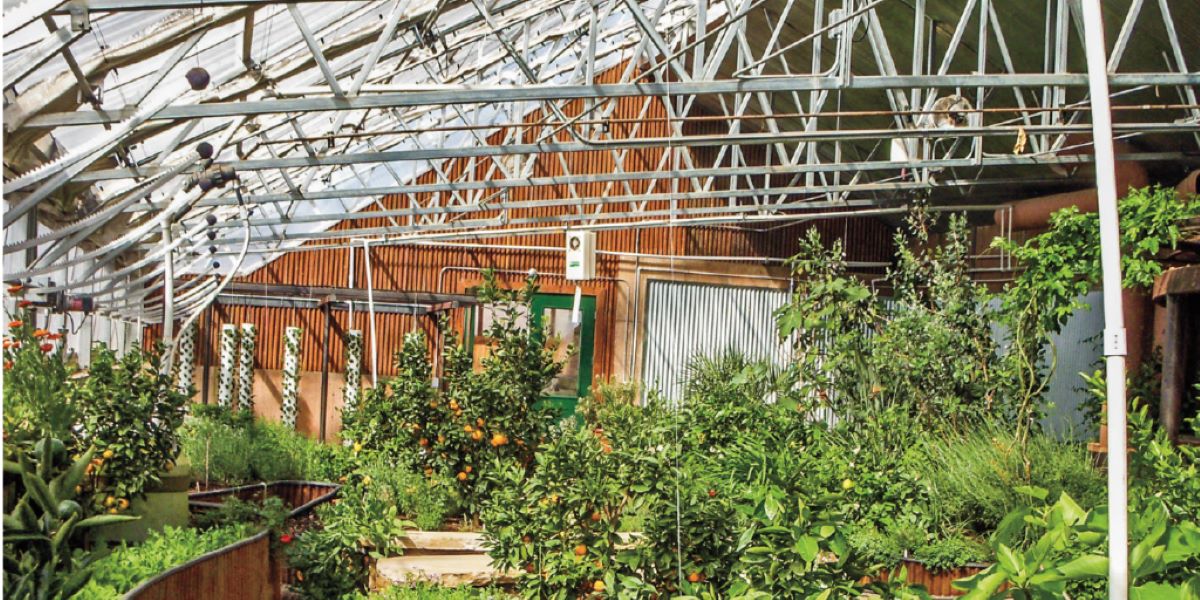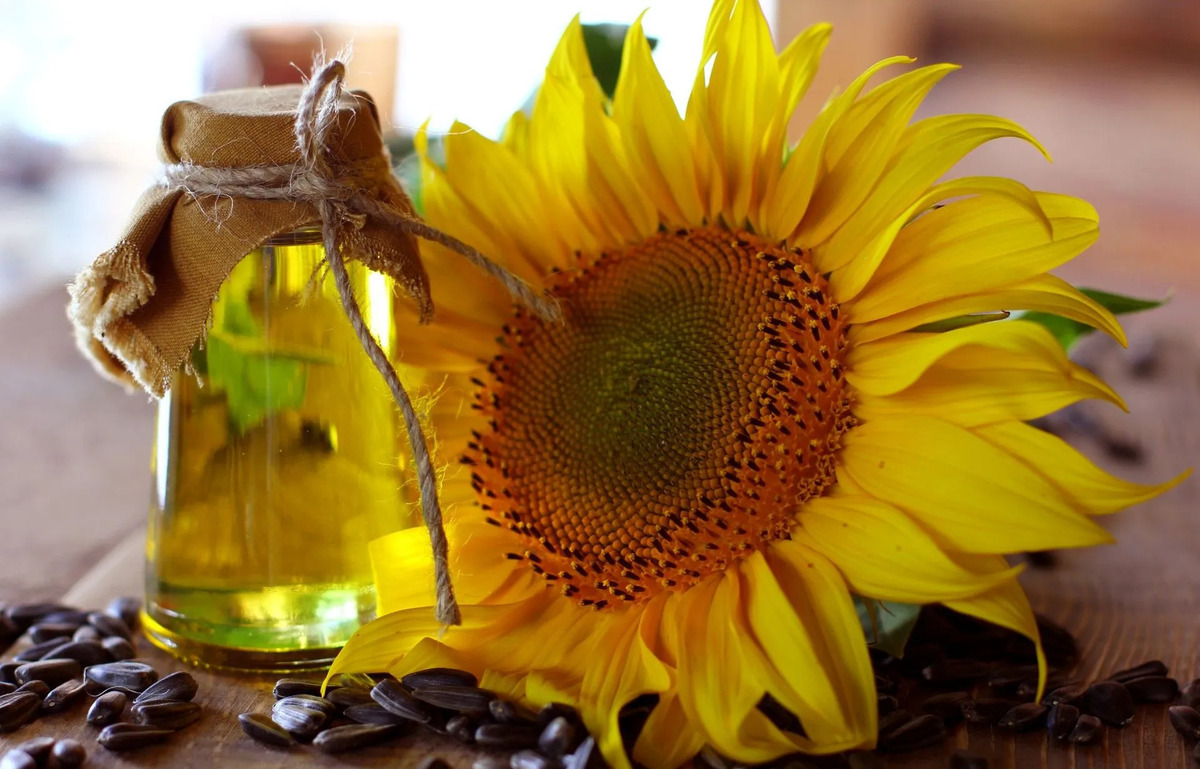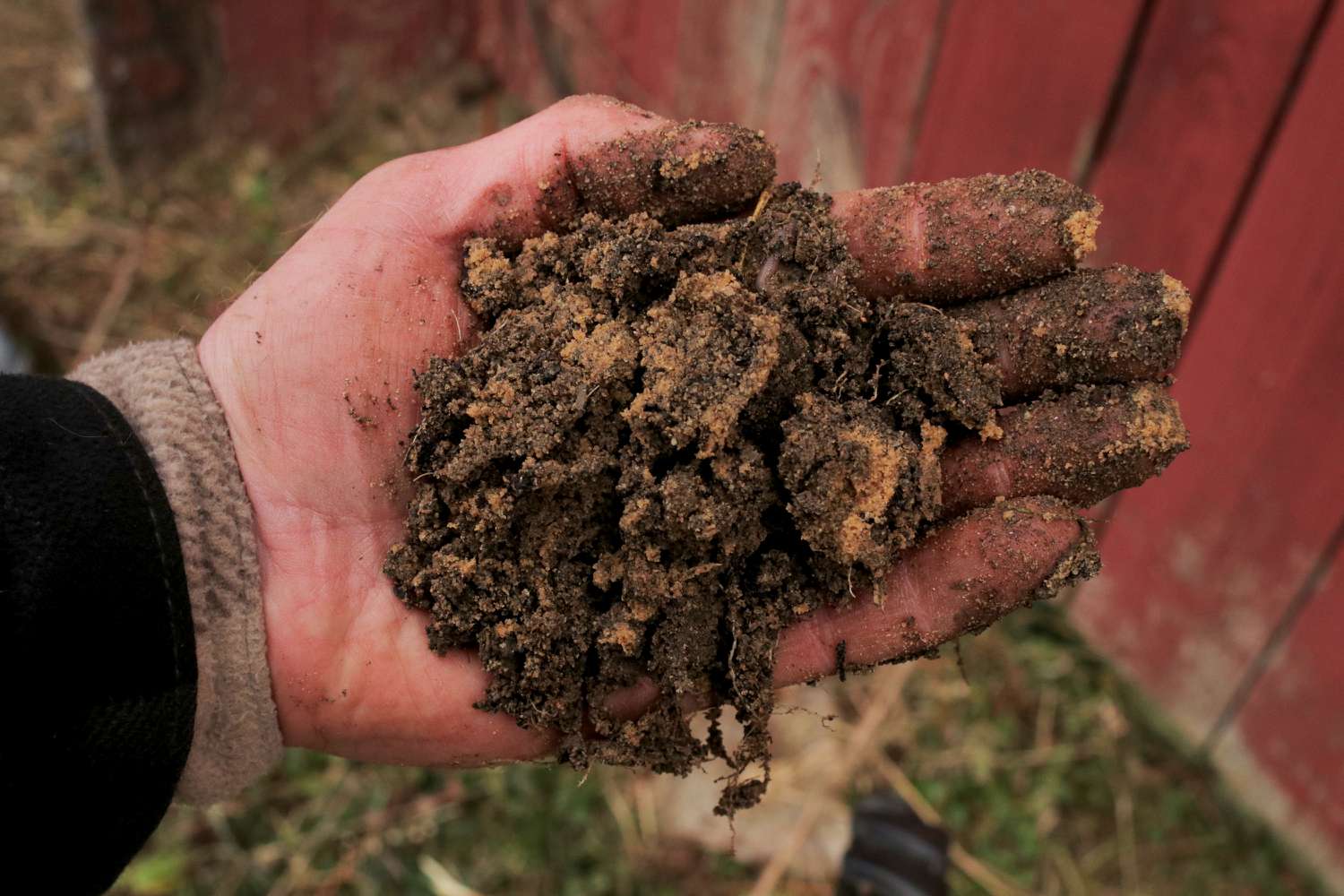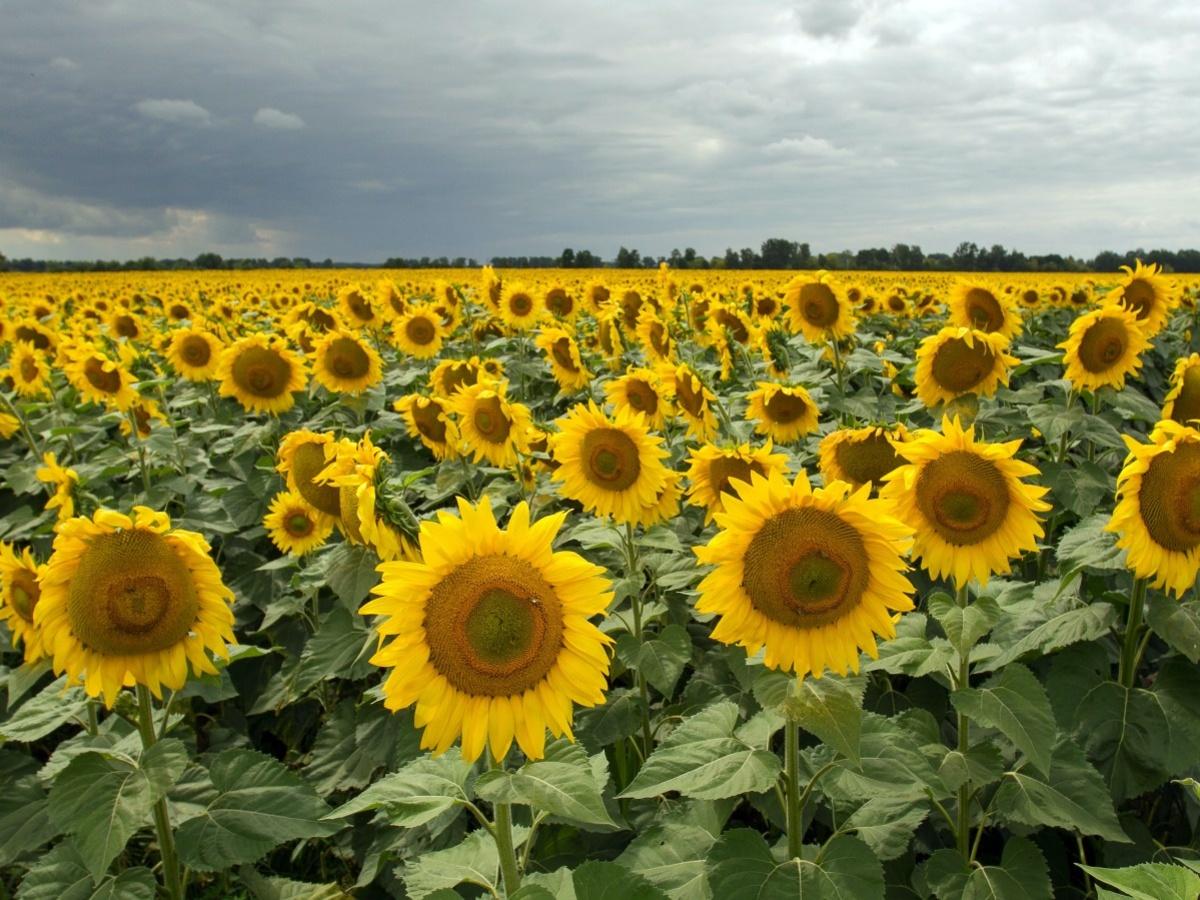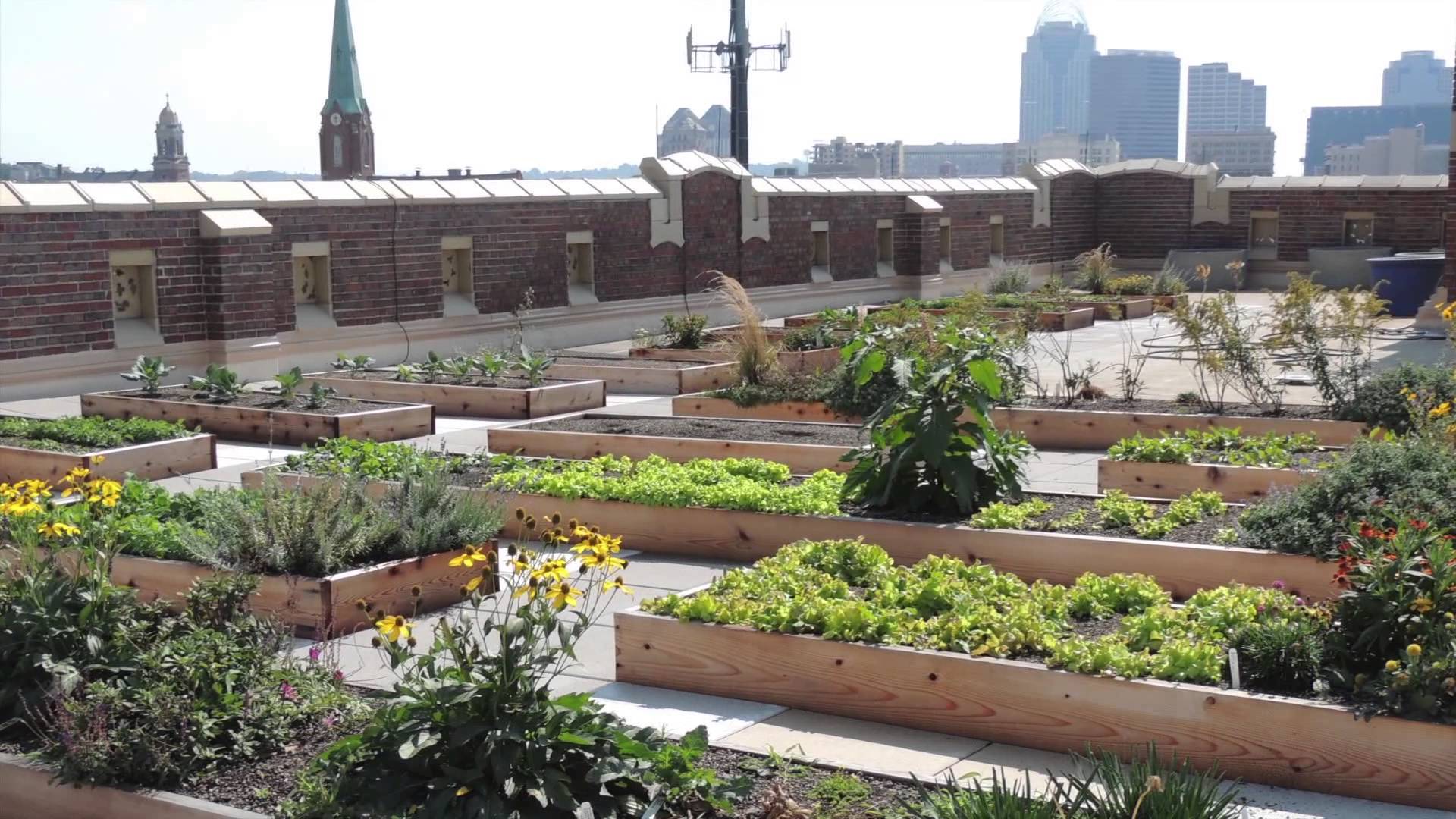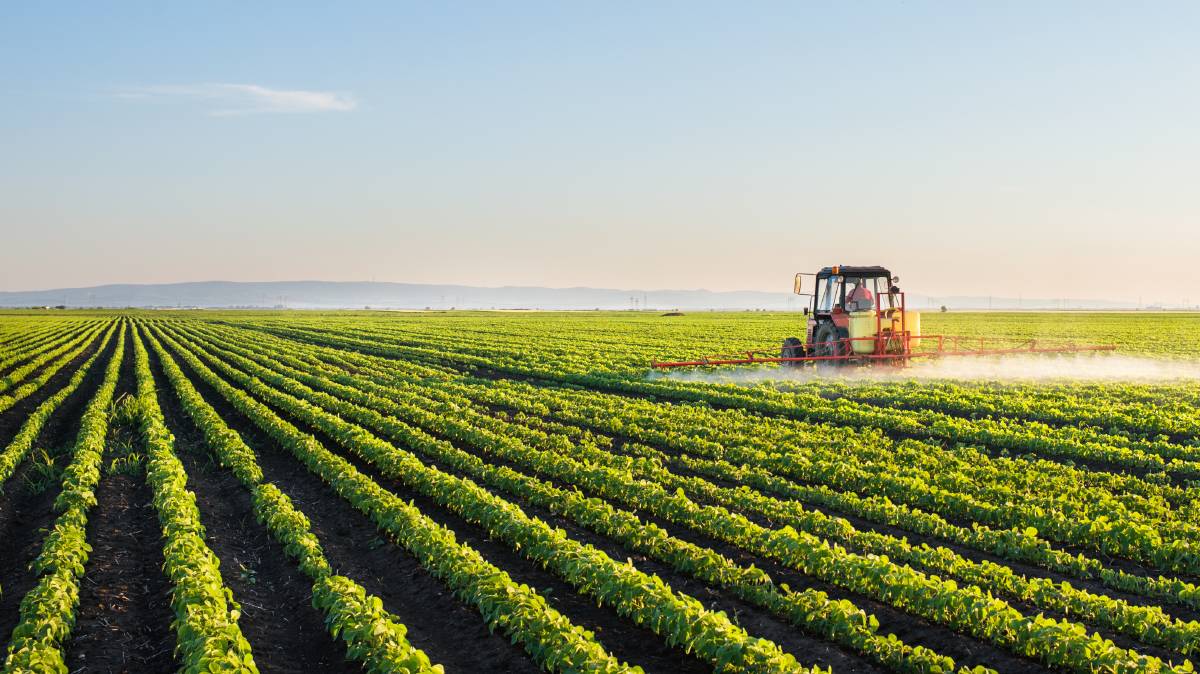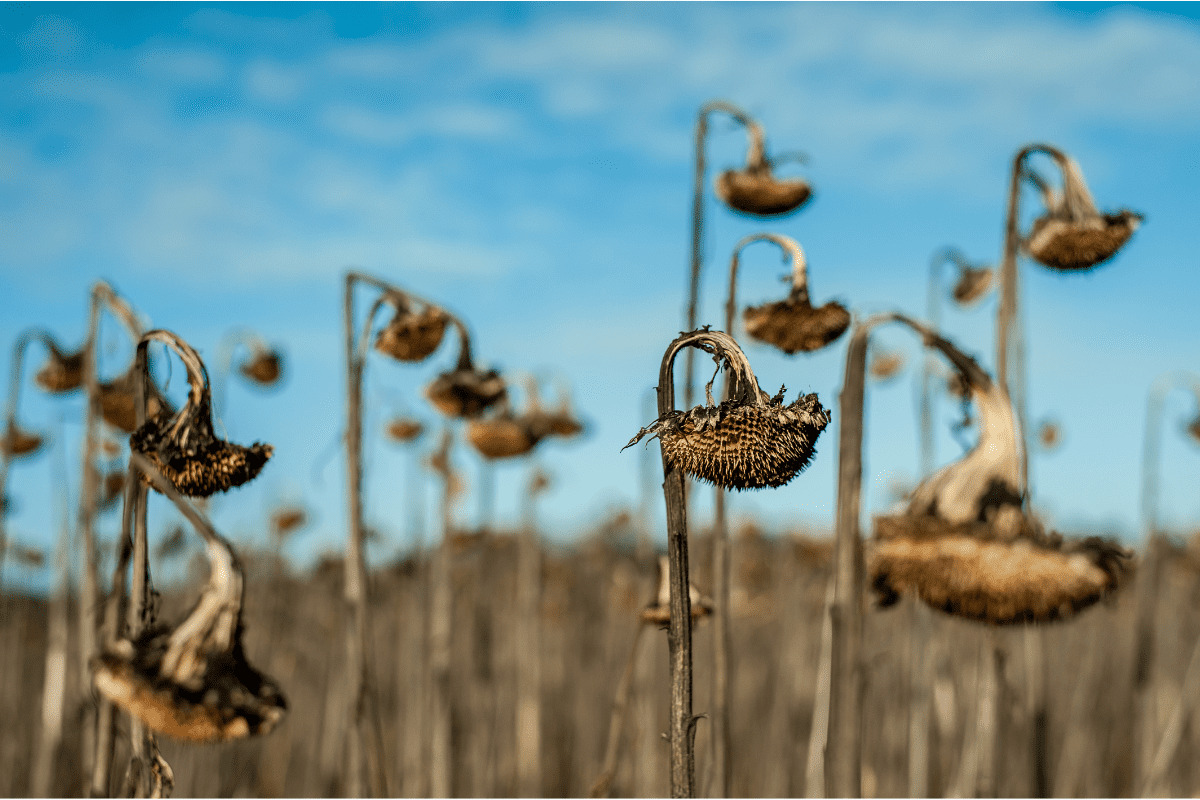Home>Gardening News and Trends>Latest News>What Do You Learn In Horticulture
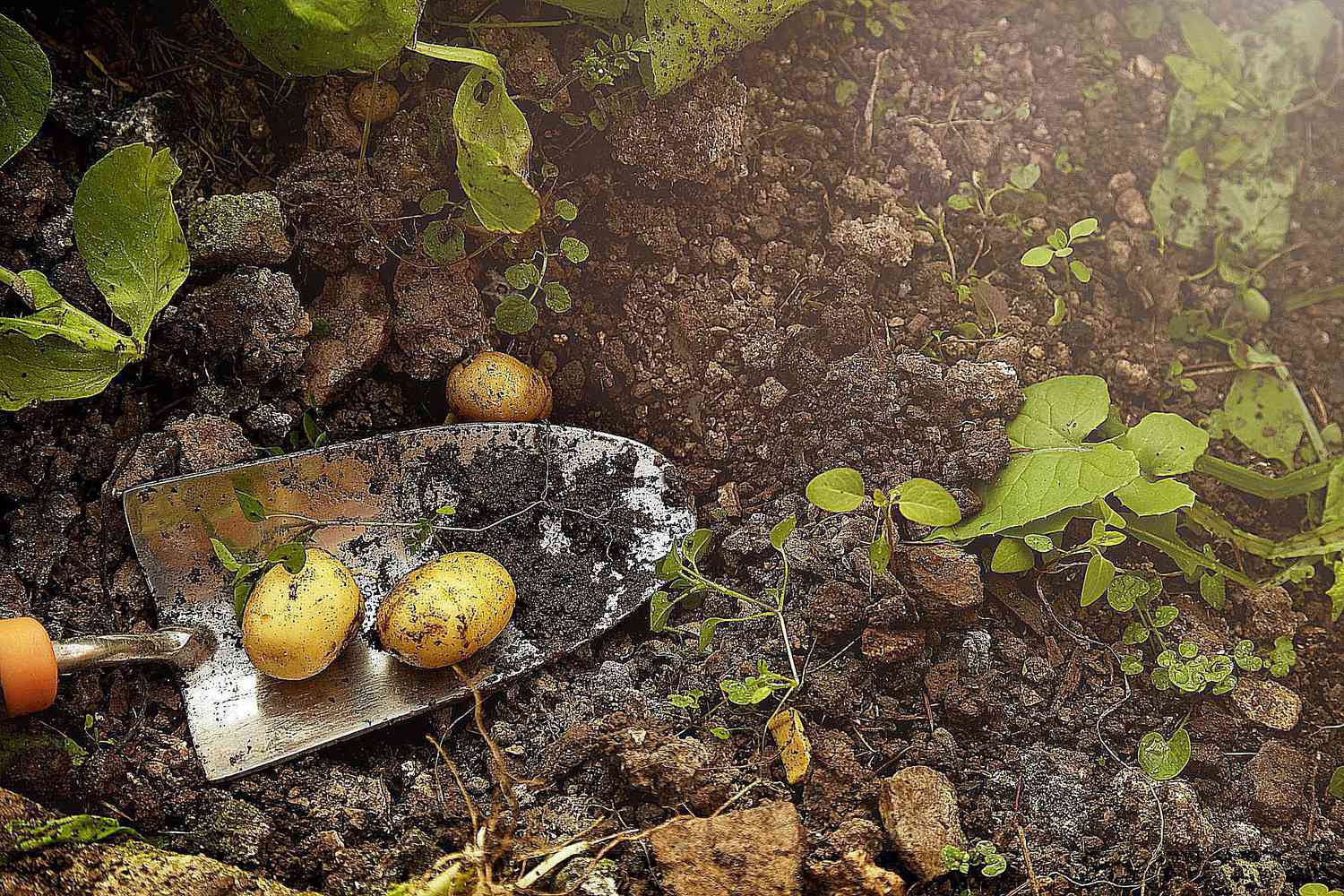

Latest News
What Do You Learn In Horticulture
Modified: February 3, 2024
Get the latest news and updates on what you learn in horticulture. Stay informed with the latest trends, techniques, and advancements in the field.
(Many of the links in this article redirect to a specific reviewed product. Your purchase of these products through affiliate links helps to generate commission for Chicagolandgardening.com, at no extra cost. Learn more)
Table of Contents
- Introduction
- Overview of Horticulture
- Plant Propagation
- Plant Selection and Care
- Soil Management
- Pest and Disease Control
- Watering and Irrigation Techniques
- Pruning and Training of Plants
- Harvesting and Post-Harvest Techniques
- Greenhouse Management
- Landscaping and Garden Design
- Sustainable Horticulture Practices
- Career Opportunities in Horticulture
- Conclusion
Introduction
Gardening and cultivating plants have always been popular hobbies for many people. Whether it’s beautifying our surroundings or growing our own fruits and vegetables, there’s something incredibly satisfying about nurturing plants and watching them thrive. Horticulture, the science and art of plant cultivation, takes this passion to a whole new level. It encompasses a wide range of practices, techniques, and knowledge to grow and maintain plants for various purposes.
Horticulture is not just limited to backyard gardening; it is a vast field that includes plant propagation, plant selection and care, soil management, pest and disease control, and much more. From small-scale urban gardens to large-scale commercial plantations, horticulture plays a crucial role in sustaining our green spaces and providing us with food and beauty.
In this article, we will take a closer look at the diverse aspects of horticulture and the valuable skills and knowledge one can gain from studying and practicing it. Whether you’re a gardening enthusiast or considering a career in horticulture, this article will serve as a comprehensive guide to what you can learn in this exciting field.
Overview of Horticulture
Horticulture is the science and art of cultivating and managing plants for human use and enjoyment. It encompasses a wide range of practices and techniques that involve growing, propagating, and caring for plants. The field of horticulture is diverse, covering everything from ornamental plants and landscaping to food production and medicinal plants.
One of the key aspects of horticulture is plant biology and physiology. Understanding how plants grow, reproduce, and respond to their environment is essential for successful cultivation. Horticulturists study plant anatomy, genetics, and biochemistry to gain insights into the growth patterns and development of plants.
Plant propagation is another essential skill in horticulture. It involves techniques such as seed sowing, grafting, and cutting to create new plants. By mastering propagation methods, horticulturists can reproduce plants with desirable traits, ensure genetic diversity, and maintain plant populations.
Plant selection and care are crucial components of horticulture. Horticulturists learn how to assess soil conditions, choose appropriate plants for specific environments, and provide proper care to promote healthy growth. This includes understanding plant nutrition, irrigation techniques, and pest management strategies.
Soil management is a vital part of horticulture. Horticulturists study soil composition and fertility to create optimal conditions for plant growth. They learn about soil amendments, organic matter, and pH levels to ensure plants have access to the necessary nutrients and water.
Horticulturists also focus on pest and disease control to minimize damage and losses in plants. They study insect behavior, plant pathology, and integrated pest management methods to identify and control pests effectively. This involves using organic and chemical treatments and implementing preventive measures to maintain plant health.
Watering and irrigation techniques are crucial in horticulture, especially in areas with limited water resources. Horticulturists learn about water conservation methods, such as drip irrigation and mulching, to ensure efficient water use and reduce wastage.
Pruning and training of plants are important skills horticulturists acquire to shape and enhance plant growth. They learn how to prune trees and shrubs to improve their structure, promote flowering and fruit production, and control plant size.
Harvesting and post-harvest techniques are also key knowledge areas in horticulture. Horticulturists learn when and how to harvest different types of crops to ensure peak quality and maximum yield. They also study post-harvest handling and storage methods to prolong the shelf life of harvested produce.
Greenhouse management is another important aspect of horticulture. Horticulturists learn how to create and maintain controlled environments for plant growth, allowing for year-round cultivation and protection from unfavorable weather conditions.
Landscaping and garden design are artistic elements of horticulture. Horticulturists learn about principles of design, plant selection, and layout to create aesthetically pleasing outdoor spaces. They consider factors such as color, texture, and bloom time to create harmonious and functional landscapes.
Horticulture is not limited to conventional practices; it also embraces sustainable and environmentally friendly approaches. Horticulturists learn about organic gardening, permaculture, and other sustainable practices to minimize the use of synthetic chemicals and promote ecological balance.
Overall, horticulture is a vast and fascinating field that offers a wealth of knowledge and skills for anyone interested in plants and their cultivation. Whether you want to become a professional horticulturist or simply enjoy the benefits of gardening, studying horticulture will equip you with the tools to nurture plants and create beautiful landscapes while contributing to the well-being of the environment.
Plant Propagation
Plant propagation is a fundamental aspect of horticulture that involves creating new plants from existing ones. It is a technique used to propagate plants with desirable traits, produce large numbers of plants for commercial purposes, and maintain genetic diversity in plant populations. There are several methods of plant propagation, each with its own advantages and applications.
One of the most common methods of plant propagation is through seeds. Seeds contain the genetic material necessary for the growth and development of a new plant. Horticulturists study seed germination requirements, including temperature, light, and moisture, to ensure successful propagation. Seeds can be sown directly in the soil or started indoors in seed trays before being transplanted.
Grafting is another widely used technique in plant propagation, especially for woody plants. It involves joining the shoot of one plant, known as the scion, with the rootstock of another plant. The scion provides the desired characteristics such as flower color or fruit quality, while the rootstock provides the root system and disease resistance. Grafting allows horticulturists to create hybrids, propagate rare or difficult-to-grow plants, and control growth habits.
Stem cutting is a method of plant propagation that involves taking a section of a plant’s stem and encouraging it to root and grow into a new plant. Softwood cuttings, which are taken from the new growth of a plant, are typically used for rapid rooting. Semi-hardwood cuttings are taken from more mature stems and are used for plants that root more slowly. Hardwood cuttings, taken from dormant stems, can be used for propagating deciduous plants during the winter.
Layering is a technique of plant propagation in which a branch or stem of a plant is bent and buried in the soil while still attached to the parent plant. Over time, the buried section will produce roots and can be separated to form a new plant. Layering is commonly used for plants that have flexible or trailing stems, such as certain shrubs and vine varieties.
Division is a method of plant propagation that involves splitting a clump of plants into smaller sections with roots and shoots. This technique is commonly used for perennial plants such as hostas and ornamental grasses. By dividing the plant, horticulturists can create multiple plants from a single parent plant, ensuring genetic diversity and rejuvenating older plants.
Tissue culture, or micropropagation, is a more advanced method of plant propagation that involves growing plants from small tissue samples in a laboratory setting. This technique is used for rapid multiplication of plants and the production of disease-free plant stock. Tissue culture allows horticulturists to propagate rare or endangered plant species and maintain genetic purity.
Plant propagation is a valuable skill in horticulture, enabling horticulturists to reproduce plants with specific traits and establish new plant populations. By mastering various propagation methods, horticulturists can contribute to plant conservation, sustainable agriculture, and the beautification of our landscapes.
Plant Selection and Care
Plant selection and care are essential aspects of horticulture that ensure the health and success of plants in various environments. Horticulturists study the characteristics and requirements of different plants to choose the most suitable species and cultivars for specific locations and purposes.
When selecting plants, horticulturists consider factors such as climate, soil conditions, sunlight availability, and water availability. They assess the hardiness zone of a location to determine which plants can thrive in that particular region. They also take into account the pH level and nutrient content of the soil to match the plant’s needs. By selecting plants that are well-suited to their environment, horticulturists set the foundation for successful growth.
Proper care is crucial to maintaining plant health and promoting optimal growth. Horticulturists learn how to provide plants with the right amount of water, nutrients, and sunlight. They study plant nutrition to ensure plants receive essential elements such as nitrogen, phosphorus, and potassium. They also become familiar with different irrigation techniques and watering schedules to prevent water stress or over-watering.
Pruning and training are important practices in plant care. Horticulturists learn how to trim and shape plants to improve their structure, promote air circulation, and enhance aesthetic appeal. By removing dead or damaged branches, they prevent potential disease and pest issues. Pruning also stimulates new growth and encourages flowering or fruit production.
Managing pests and diseases is another crucial aspect of plant care. Horticulturists study common pests and diseases that affect plants and learn how to identify and treat them. They develop integrated pest management strategies, which may include biological controls, cultural practices, and targeted pesticide application. By implementing preventive measures and monitoring plant health, horticulturists can minimize plant damage and ensure the well-being of their plants.
Maintaining proper soil health is an essential part of plant care. Horticulturists learn about soil amendments and organic matter to improve soil fertility and structure. They may conduct soil testing to assess the nutrient levels and pH balance of the soil, making necessary adjustments to create a favorable environment for plants. By maintaining healthy soil, horticulturists provide plants with a solid foundation for optimal growth and development.
Regular monitoring and observation are key aspects of plant care. Horticulturists are trained to identify signs of stress, nutrient deficiencies, or insect infestations in plants. By closely monitoring plant health, they can intervene promptly and take necessary actions to address any issues. This includes adjusting watering schedules, applying appropriate fertilizers, or implementing pest management strategies.
Overall, plant selection and care are essential skills in horticulture. By selecting the right plants for a given environment and providing them with proper care, horticulturists can ensure the health, beauty, and longevity of plants. Whether it’s an ornamental garden, a productive vegetable patch, or a thriving landscape, proper plant selection and care are the pillars of successful horticulture.
Soil Management
Soil management plays a crucial role in horticulture as it directly affects the health and productivity of plants. Horticulturists study soil composition, structure, and fertility to create optimal conditions for plant growth. By understanding the characteristics of soil and implementing effective management practices, they can ensure the long-term success of their horticultural endeavors.
One of the key aspects of soil management is assessing soil health and fertility. Horticulturists analyze the nutrient content, pH level, and organic matter content of the soil to determine its suitability for plant growth. They may conduct soil tests to identify deficiencies or imbalances and make informed decisions regarding soil amendments and fertilizers.
Organic matter plays a vital role in soil fertility and structure. Horticulturists learn about composting techniques to recycle organic waste and enrich the soil with nutrients and beneficial microorganisms. By adding organic matter, such as compost or well-rotted manure, horticulturists improve soil texture, water retention, and nutrient-holding capacity, thus creating a favorable environment for plant roots.
Soil structure is important for root development and water movement. Horticulturists aim to maintain a well-drained soil structure that allows adequate oxygen circulation to the roots. They may employ soil amendments like sand or peat moss to improve the structure of heavy clay soils or add organic matter to sandy soils to enhance water-holding capacity.
Soil pH influences the availability of nutrients to plants. Horticulturists study the optimal pH range for different plants and make adjustments accordingly. They may use soil amendments like lime to raise the pH of acidic soils or sulfur to lower the pH of alkaline soils. By maintaining appropriate pH levels, horticulturists ensure that plants can access essential nutrients for healthy growth.
Irrigation management is an essential aspect of soil management. Horticulturists learn about different irrigation techniques, such as drip irrigation or sprinkler systems, to provide plants with the right amount of water. They also study factors like evaporation rates, plant water needs, and soil moisture levels to establish appropriate irrigation schedules. By implementing efficient irrigation practices, horticulturists minimize water waste and prevent waterlogging or drought stress in plants.
Preventing soil erosion is another important consideration in soil management. Horticulturists employ various techniques such as planting cover crops, contouring slopes, or using mulch to protect the soil surface from erosion caused by wind or water. By minimizing soil erosion, horticulturists preserve the integrity and fertility of the soil.
Soil conservation practices are also part of soil management. Horticulturists learn about techniques like crop rotation, terracing, and agroforestry to reduce soil erosion, enhance organic matter content, and maintain soil health in the long term. These sustainable practices contribute to the preservation of soil resources and the overall environmental sustainability of horticultural activities.
In summary, soil management is a critical component of horticulture. By understanding the properties of soil, implementing appropriate practices, and maintaining soil health, horticulturists ensure optimal conditions for plant growth and maximize the productivity and sustainability of their horticultural endeavors.
Pest and Disease Control
Pest and disease control is a vital aspect of horticulture as it helps protect plants from damage and ensures their long-term health and productivity. Horticulturists study the identification, prevention, and management of pests and diseases to maintain plant vigor and reduce potential losses.
Pests, such as insects, mites, and rodents, can cause significant damage to plants. Horticulturists learn about pest biology and behavior to identify and monitor pest populations effectively. They study different pest control methods, including biological controls, cultural practices, and chemical treatments. By implementing integrated pest management strategies, horticulturists aim to control pests while minimizing harm to beneficial insects and the environment.
Diseases caused by pathogens, such as fungi, bacteria, and viruses, can weaken and kill plants. Horticulturists study plant pathology to recognize disease symptoms and understand disease cycles. They learn about disease prevention techniques, such as crop rotation, sanitation, and proper plant spacing, to reduce the risk of disease outbreaks. When necessary, horticulturists may use chemical treatments or resistant plant varieties to manage plant diseases.
Regular monitoring of plants is an essential part of pest and disease control. Horticulturists observe plants for signs of damage, abnormal growth patterns, or discoloration that may indicate pest or disease problems. Early detection allows for prompt intervention and increases the likelihood of successful control.
Preventive measures are key to pest and disease control. Horticulturists focus on creating healthy growing conditions for plants, such as proper soil management, adequate nutrition, and appropriate irrigation practices. Strong and healthy plants are better equipped to resist pest and disease attacks.
Biological controls, such as beneficial insects or nematodes, are an important component of pest management in horticulture. Horticulturists learn about the natural enemies of pests and actively introduce them into the environment to control pest populations. This approach reduces reliance on chemical treatments and promotes ecological balance in the garden or field.
Cultural practices also play a significant role in pest and disease control. Horticulturists study techniques like proper pruning, weed control, and removal of diseased plant material. These practices help eliminate potential pest habitats, reduce disease spread, and improve air circulation around plants.
Chemical treatments are sometimes necessary in pest and disease control. Horticulturists learn about different pesticides, their effectiveness, and their environmental impact. They employ these treatments judiciously, following label instructions and using them as a last resort when other methods have proven insufficient.
Education and public awareness are important aspects of pest and disease control. Horticulturists not only acquire knowledge themselves but also educate others about the identification and management of pests and diseases. By sharing information, they empower others to contribute to plant health and prevent the spread of harmful pests and diseases.
In summary, effective pest and disease control is vital for the success and longevity of horticultural practices. By implementing integrated pest management strategies, focusing on preventive measures, and employing appropriate control methods, horticulturists ensure plant health, minimize damage, and promote sustainable and environmentally friendly approaches to pest and disease control.
Watering and Irrigation Techniques
Proper watering and irrigation techniques are essential aspects of horticulture as they ensure plants receive the right amount of water for healthy growth and development. Horticulturists study different watering methods and techniques to optimize water use efficiency and prevent water stress or wastage.
One of the key factors in watering and irrigation is understanding the water needs of different plants. Horticulturists study the specific water requirements of various plant species, taking into account factors like plant size, growth stage, and environmental conditions. Some plants prefer evenly moist soil, while others tolerate some drying between watering.
Timing is crucial in watering. Horticulturists determine the best time of day to water plants, typically early morning or late afternoon, to minimize water loss due to evaporation. They consider the climatic conditions, including temperature and humidity levels, in determining the frequency of watering to prevent under or over-watering.
There are several methods of irrigation that horticulturists employ. Sprinkler irrigation involves using overhead sprinklers or sprayers to distribute water evenly across the planting area. This method is suitable for lawns, large gardens, and agricultural fields. Drip irrigation is another commonly used method, where water is delivered directly to the base of plants through emitters or drip tubes. This method targets the root zone, minimizing water loss and promoting efficient water use.
Horticulturists also utilize techniques like mulching to conserve soil moisture. Mulch, such as organic materials or plastic, is applied to the soil surface around plants to reduce evaporation, suppress weed growth, and maintain more even soil temperatures. Mulching is particularly beneficial in hot and arid climates or water-restricted areas.
Technology plays a role in modern irrigation techniques. Horticulturists may use automated irrigation systems that are controlled by timers or sensors. These systems ensure precise and efficient water delivery based on plant and soil requirements. They can also be programmed to adjust watering schedules based on weather conditions, conserving water and optimizing plant health.
Watering techniques also depend on the type of plants and their growth stage. Newly planted or transplanted seedlings require more frequent watering to establish their root systems, while mature plants usually require less frequent but deeper watering to encourage deep root growth.
Proper drainage is crucial in watering and irrigation. Horticulturists ensure that the planting area has adequate drainage to prevent waterlogging, as overly saturated soil can lead to root rot and other diseases. If necessary, they may incorporate drainage systems or create raised beds to improve drainage.
Conservation of water is a significant consideration in horticultural irrigation. Horticulturists focus on optimizing water use efficiency by employing techniques like soil moisture sensors, which provide real-time data on soil moisture levels, allowing for precise irrigation scheduling. They also promote xeriscaping, which involves choosing drought-tolerant plants and designing landscapes that require minimal supplemental watering.
In summary, proper watering and irrigation techniques are crucial for plant health and sustainable horticultural practices. By understanding the water needs of different plants, utilizing appropriate irrigation methods, and promoting water conservation, horticulturists ensure optimal water use efficiency while supporting the growth and vitality of plants.
Pruning and Training of Plants
Pruning and training are important techniques in horticulture that help shape and enhance the growth of plants. Through pruning, horticulturists remove specific plant parts to improve structure, promote flowering or fruit production, control size, and maintain overall plant health. Training involves guiding plants’ growth in desired directions or shapes to create aesthetically pleasing and functional landscapes.
One of the primary reasons for pruning is to improve the structure and form of plants. Horticulturists remove weak, damaged, or crossing branches to create a strong and well-balanced framework. Pruning enhances the plant’s natural form and allows for better air circulation, reducing the risk of disease and pest infestation.
Promoting flowering and fruit production is another goal of pruning. Horticulturists selectively remove certain branches or buds to redirect the plant’s energy towards flower and fruit development. This results in more abundant blooms and larger, healthier fruits.
Controlling plant size is a common reason for pruning, particularly in urban or confined spaces. By selectively removing branches, horticulturists manage the overall size and shape of plants, ensuring they fit within the intended space and don’t become overly large or unruly. Pruning can also help to rejuvenate older plants and encourage new growth.
Pruning is essential for maintaining plant health. Horticulturists remove dead, diseased, or decaying plant material, preventing the spread of pathogens and potential infestations. By eliminating these potential sources of infection, horticulturists promote overall plant vigor and longevity.
In addition to pruning, training is an important technique in horticulture. Training involves guiding plants’ growth through techniques such as espalier (training plants against a wall), topiary (shaping plants into specific forms), or supporting vines with trellises. These practices create visually appealing patterns and structures while managing the growth of plants in a desired direction.
Horticulturists also use training techniques to manage plants’ access to sunlight. By directing growth or providing support, horticulturists ensure that individual branches or leaves receive adequate sunlight for optimal photosynthesis. This helps to promote healthy growth and improve flower or fruit production.
Timing is an important consideration in pruning and training. Horticulturists learn to prune or train plants during the dormant season or specific growth stages to minimize stress and maximize the desired outcomes. Timing varies depending on the plant species and the objectives of pruning or training.
Proper pruning techniques are essential to avoid damaging plants. Horticulturists learn about the appropriate tools and methods to make clean cuts and prevent the spread of diseases. They also become familiar with the specific pruning requirements of different plants to achieve the desired outcomes effectively.
Training and pruning are ongoing practices in horticulture. Horticulturists regularly assess and maintain plants to ensure that they continue to thrive and meet their intended purpose in the landscape. Through regular observation and intervention, horticulturists contribute to the beauty, health, and longevity of plants in various horticultural settings.
Harvesting and Post-Harvest Techniques
Harvesting marks the culmination of the horticultural journey, where plants’ fruits, vegetables, or flowers reach their peak of ripeness and are ready to be collected. However, the process doesn’t end with harvesting alone. Proper post-harvest techniques are essential to maintain the quality, freshness, and shelf life of the harvested produce. Horticulturists study and employ various methods to ensure that the fruits of their labor can be enjoyed for an extended period.
Harvesting is done at the optimal stage of maturity for each crop. Horticulturists learn how to assess the readiness of different fruits, vegetables, or flowers by examining factors like color, texture, and aroma. They use specific harvesting tools and techniques to minimize damage to the plants and the quality of the produce.
Post-harvest handling begins immediately after harvesting. Horticulturists pay careful attention to prevent mechanical injuries, bruising, or contamination during this process. They utilize proper handling techniques, including gentle handling, sorting, and grading, to maintain the integrity of the harvested produce.
Temperature control is essential in post-harvest handling. Horticulturists employ techniques such as cooling or refrigeration to slow down the ripening process and extend shelf life. This is especially important for perishable fruits and vegetables that are sensitive to temperature changes.
Proper storage conditions are crucial in preserving the freshness and quality of harvested produce. Horticulturists identify the specific storage requirements of different crops, taking into account factors like humidity, ventilation, and ethylene emission. They store produce in suitable containers, such as crates or coolers, and place them in optimal storage environments, such as refrigerated rooms.
Post-harvest treatments, such as washing or sanitizing, are carried out to remove dirt, debris, and any potential pathogens. Horticulturists ensure that the treatments are applied according to recommended guidelines to maintain food safety and prevent contamination.
Packaging is an important aspect of post-harvest handling. Horticulturists select appropriate packaging materials that protect the harvested produce and prevent spoilage. They consider factors like ventilation, moisture control, and aesthetic appeal when choosing packaging options.
Transportation of harvested produce requires care and attention to preserve quality. Horticulturists ensure that the produce is packed and transported in a manner that minimizes damage and maintains optimal conditions. They may employ techniques like cushioning, temperature control, and proper stacking to reduce the risk of bruising or deterioration during transit.
In addition to physical handling and storage, post-harvest techniques also include measures to control various physiological processes that affect the quality of harvested produce. Horticulturists may utilize methods such as controlled atmosphere storage or modified atmosphere packaging to slow down respiration and delay ripening, thereby extending the shelf life of the produce.
Quality control is an integral part of post-harvest techniques. Horticulturists regularly inspect the harvested produce for any signs of spoilage, decay, or damage. This allows them to remove any compromised items and ensure that only high-quality produce reaches the market or the consumer.
Post-harvest techniques are continuously evolving as new technologies and research emerge. Horticulturists stay abreast of the latest advancements and best practices to improve efficiency, prolong shelf life, and maintain the quality of harvested produce. This ensures that consumers can enjoy fresh, nutritious, and flavorful fruits, vegetables, and flowers long after they have been harvested.
Greenhouse Management
Greenhouses are controlled environments that provide a favorable growing environment for plants by manipulating factors such as temperature, humidity, light levels, and ventilation. Greenhouse management is a specialized branch of horticulture that involves ensuring optimal conditions for plant growth and maximizing productivity within these enclosed structures.
Temperature control is a critical aspect of greenhouse management. Horticulturists monitor and adjust the temperature inside the greenhouse to match the specific requirements of different plants. They utilize heating systems, such as heaters or heat mats, during colder periods and employ ventilation or cooling systems, such as fans or shade cloths, during warmer periods to maintain an ideal growing temperature.
Humidity management plays a crucial role in greenhouse environments. Horticulturists strive to maintain appropriate levels of humidity to prevent issues like fungal diseases or excessive moisture condensation on plant surfaces. They utilize humidifiers or misting systems to increase humidity in drier conditions or employ dehumidifiers or proper ventilation techniques to reduce humidity levels in humid climates.
Lighting is a key element in greenhouse management, especially in regions with limited sunlight or during shorter daylight periods. Horticulturists utilize supplemental lighting systems, such as fluorescent, LED, or high-intensity discharge (HID) lamps, to provide the necessary light levels for optimal plant growth. They carefully consider the light spectrum, intensity, and duration to mimic natural sunlight and ensure proper photosynthesis.
Irrigation management is essential in greenhouse environments. Horticulturists implement watering systems that deliver water directly to the root zone of plants, such as drip irrigation or ebb-and-flow systems. They closely monitor soil moisture levels and employ irrigation schedules according to the specific needs of each crop. This ensures efficient water use and prevents over or under-watering.
Nutrient management is another critical aspect of greenhouse management. Horticulturists provide plants with proper nutrition through the application of fertilizers or by employing hydroponic or aeroponic systems. They regularly test and analyze nutrient levels in the growing media or nutrient solutions, adjusting the nutrient composition to ensure optimal plant nutrition and growth.
Pest and disease control is of utmost importance in greenhouse environments, where a controlled and enclosed space can facilitate the rapid spread of pests or diseases. Horticulturists implement stringent monitoring and integrated pest management (IPM) practices to detect and manage pests or diseases promptly. They may employ physical barriers, biological control agents, or targeted chemical treatments to keep pest and disease populations under control.
Greenhouse structure and maintenance are vital considerations. Horticulturists ensure that the greenhouse structure is well-maintained, secure, and provides adequate protection from external elements such as wind, rain, or excessive sunlight. They regularly inspect the greenhouse for cracks, leaks, or damage and make necessary repairs to maintain a controlled environment.
Recordkeeping and data analysis are essential in greenhouse management. Horticulturists maintain detailed records of environmental factors, plant growth, pest and disease incidence, and fertilization schedules. They analyze this data to identify patterns, optimize growing conditions, and make informed decisions for future crop planning.
Greenhouse management also involves efficient space utilization and crop rotation. Horticulturists plan and organize the layout of crops, considering factors such as plant size, growth habit, and timing. They also implement crop rotation practices to minimize the buildup of pests or diseases and optimize soil and nutrient utilization.
Continuous learning and adaptation are key in greenhouse management. Horticulturists stay updated with the latest technologies, research, and best practices to improve efficiency, sustainability, and productivity in greenhouse environments. This allows them to maximize the potential of these controlled environments and cultivate high-quality plants throughout the year.
Landscaping and Garden Design
Landscaping and garden design are artistic aspects of horticulture that involve creating visually appealing and functional outdoor spaces. Horticulturists study principles of design, plant selection, and layout to transform bare landscapes into stunning gardens and green spaces that evoke beauty and harmony.
One of the key considerations in landscaping and garden design is understanding the principles of design. Horticulturists learn about concepts such as balance, proportion, unity, and rhythm to create aesthetically pleasing compositions. They consider the spatial qualities of the area, including its size, shape, and topography, to design layouts that maximize visual impact.
Plant selection is a crucial element in landscaping and garden design. Horticulturists choose plants that thrive in the specific climate, soil conditions, and available light levels. They consider factors such as color, texture, form, and seasonal interest to create a harmonious and varied palette within the landscape.
Emphasis is placed on the focal points in garden design. Horticulturists identify and create focal points, such as specimen trees, sculptures, or water features, to draw attention and create a sense of visual interest. They carefully consider placement and scale to ensure these focal points enhance the overall design of the landscape.
Horticulturists also utilize techniques to create visual depth and perspective in garden design. They employ elements like pathways, lines of sight, and layering of plants to guide the viewer’s gaze and create a sense of depth and movement. By incorporating these techniques, horticulturists make smaller spaces appear larger and multifaceted.
Garden design is not limited to plants alone. Horticulturists also incorporate hardscape elements, such as paths, patios, walls, or decks, to create functional and visually engaging spaces. They select materials that complement the overall design, ensuring that hardscape features blend seamlessly with the surrounding plants and structures.
Seasonal interest is an important consideration in garden design. Horticulturists plan for year-round appeal by incorporating plants with varying bloom times, foliage colors, or interesting textures. This ensures that the garden remains visually stimulating and engaging throughout the changing seasons.
Environmental sustainability is increasingly emphasized in garden design. Horticulturists consider water conservation techniques, use of native or drought-tolerant plants, and incorporation of sustainable materials to create eco-friendly landscapes. They strive to reduce the environmental impact of garden design while creating beautiful and functional outdoor spaces.
Functionality is another vital aspect of garden design. Horticulturists consider how the outdoor space will be used and design accordingly. They create areas for relaxation, socializing, or recreational activities. They also take into account factors like sun exposure, privacy, and accessibility to ensure the garden meets the practical needs of its users.
Furthermore, maintenance considerations play a role in garden design. Horticulturists select plants and design layouts that are manageable and sustainable for the garden owner or maintenance personnel. They provide recommendations on proper plant care, pruning techniques, and pest and disease control to ensure the long-term success of the garden.
Ultimately, landscaping and garden design are artistic expressions that combine horticultural knowledge with an eye for aesthetics. Horticulturists create outdoor spaces that not only provide beauty and visual interest but also promote well-being and connection with nature. Through thoughtful design and plant selection, they transform ordinary landscapes into living works of art.
Sustainable Horticulture Practices
Sustainable horticulture practices are essential in minimizing the environmental impact of horticultural activities while promoting long-term ecological balance and resource conservation. Horticulturists embrace a range of practices that prioritize sustainability, including organic gardening, permaculture, and the responsible use of resources.
Organic gardening is a cornerstone of sustainable horticulture. Horticulturists avoid the use of synthetic pesticides, herbicides, and fertilizers that can harm beneficial insects and contaminate the soil and water. Instead, they utilize organic alternatives, such as compost, natural pest repellents, and beneficial insects, to manage pests and promote plant health without compromising the environment.
Permaculture is another sustainable practice embraced by horticulturists. It involves designing and creating ecosystems that mimic natural patterns and processes, integrating diverse plant species, animals, and microorganisms. Horticulturists consider factors such as companion planting, crop rotation, and water management to create self-sustaining and regenerative food production systems.
Water conservation is a crucial aspect of sustainable horticulture practices. Horticulturists employ techniques like drip irrigation, mulching, and rainwater harvesting to optimize water use and minimize waste. They consider the water requirements of plants and provide irrigation based on their specific needs, avoiding overwatering or unnecessary use of water resources.
Soil health is a foundational component of sustainable horticulture. Horticulturists focus on building and maintaining healthy soils by incorporating organic matter, practicing crop rotation, and minimizing soil erosion. Healthy soils support plant growth, improve nutrient availability, and enhance overall ecosystem resilience.
Composting is a vital practice in sustainable horticulture. Horticulturists recycle organic waste, such as plant trimmings and kitchen scraps, to create nutrient-rich compost. This organic material enriches the soil, enhances its structure, and reduces the need for synthetic fertilizers, thereby closing the loop and minimizing waste.
Biodiversity conservation is a key consideration in sustainable horticulture. Horticulturists promote the use of native plant species, which support local ecosystems and provide habitat for wildlife. They avoid the use of invasive plant species that can disrupt natural habitats and replace native vegetation.
Integrated pest management (IPM) is a sustainable approach that horticulturists employ to control pests while minimizing reliance on synthetic chemicals. They incorporate a combination of cultural practices, biological controls, and targeted pesticide applications to manage pest populations responsibly. IPM focuses on prevention, monitoring, and only using chemical treatments as a last resort.
Energy efficiency is an important aspect of sustainable horticulture practices. Horticulturists utilize energy-efficient equipment, such as LED grow lights and energy-saving irrigation systems, to reduce energy consumption. They also implement proper insulation and use renewable energy sources, such as solar power, where feasible.
Pollinator conservation is prioritized in sustainable horticulture. Horticulturists plant flowers and provide habitat features to attract and support pollinators, such as bees and butterflies. They refrain from using pesticides harmful to pollinators and create environments that foster their health and well-being, contributing to overall ecosystem resilience.
Sustainable horticulture practices also involve education and outreach. Horticulturists share their knowledge and promote sustainable gardening practices among gardeners, homeowners, and communities. They advocate for environmentally conscious choices and encourage collaboration in creating landscapes that benefit both people and the planet.
In summary, sustainable horticulture practices prioritize environmental stewardship, resource conservation, and ecological balance. By embracing organic gardening, permaculture principles, water efficiency, soil health, biodiversity conservation, and other sustainable techniques, horticulturists play a vital role in promoting environmentally sound practices in horticulture and contributing to a more sustainable future.
Career Opportunities in Horticulture
Horticulture offers a wide range of exciting and fulfilling career opportunities for individuals passionate about plants, nature, and the environment. Whether it’s nurturing plants, designing beautiful landscapes, or conducting research, the field of horticulture provides a diverse and rewarding path for professionals.
One of the most common career paths in horticulture is that of a horticulturist. Horticulturists work in a variety of settings, such as botanical gardens, nurseries, or landscape firms. They are responsible for plant propagation, cultivating and maintaining plants, managing landscapes, and providing expert advice on plant care and garden design. Horticulturists often specialize in areas such as fruit production, flower gardening, or sustainable landscaping.
Landscape designers and architects are integral to transforming outdoor spaces into visually stunning and functional landscapes. They work closely with clients to create designs that meet their aesthetic preferences and functional needs. Landscape professionals select appropriate plant species, incorporate hardscape structures, and consider factors such as environmental sustainability and sustainable practices to create inviting and sustainable outdoor spaces.
Garden center managers oversee the operations of nurseries and garden centers, where plants and gardening supplies are sold. They are responsible for managing inventory, supervising staff, ensuring quality control, and providing customer service. Garden center managers keep up-to-date with the latest gardening trends and products, organize events and workshops, and create engaging retail environments.
Research scientists and educators play a vital role in advancing horticultural knowledge and innovation. They conduct research on plant physiology, genetics, disease management, and sustainable practices. They also collaborate with farmers, horticultural businesses, and government agencies to develop and promote best practices in plant production and environmental management. Research scientists and educators often work in universities, government research organizations, and agricultural extension services.
Arborists are tree care experts who specialize in the cultivation, maintenance, and health management of individual trees. They diagnose and treat tree diseases, provide recommendations for proper pruning, and assess tree stability and safety. Arborists also play a critical role in urban forestry, managing tree populations in urban environments to enhance their benefits, such as shade, carbon sequestration, and aesthetic value.
Greenhouse managers oversee the operations of greenhouse facilities, ensuring optimal growing conditions and efficient plant production. They manage crop schedules, monitor environmental factors, implement pest and disease control strategies, and oversee staff. Greenhouse managers often work in commercial greenhouse operations, botanical gardens, or research institutions.
Plant breeders and geneticists contribute to the development of improved plant varieties with desired traits, such as disease resistance, improved yields, or ornamental characteristics. They conduct research in genetics and plant breeding techniques to create new cultivars that meet market demands. Plant breeders work in seed companies, research institutions, and plant breeding programs.
Sustainable agriculture specialists focus on applying environmentally friendly and sustainable practices in agricultural settings. They promote regenerative agriculture, organic farming, and permaculture techniques to reduce the use of synthetic chemicals, conserve resources, and enhance ecosystem health. Sustainable agriculture specialists work with farmers, government agencies, and non-profit organizations.
These are just a few examples of the numerous career opportunities in horticulture. Other roles include horticultural therapists, garden writers, public garden managers, urban gardeners, and commercial growers. The field of horticulture continues to expand and evolve, providing a wide range of avenues for individuals who are passionate about plants, the environment, and creating thriving outdoor spaces.
Conclusion
Horticulture is a diverse field that encompasses a broad range of practices and disciplines related to plant cultivation and management. From plant propagation and soil management to pest control and garden design, horticulture offers countless opportunities for individuals passionate about plants, nature, and the environment. It is a field that combines science, artistry, and conservation to create beautiful landscapes, grow nutritious food, and contribute to the well-being of our planet.
Throughout this article, we have explored the various aspects of horticulture, highlighting the knowledge and skills that can be gained in each area. We have learned about the importance of plant selection and care, soil management, and sustainable horticulture practices in promoting healthy plant growth while minimizing environmental impact. We have also discussed the vital roles that horticulturists play in managing pests and diseases, implementing proper watering and irrigation techniques, and creating visually appealing landscapes.
Furthermore, we have outlined the numerous career opportunities available in horticulture, including horticulturists, landscapers, garden center managers, research scientists, arborists, and sustainable agriculture specialists, among others. These career paths offer the chance to work with plants, promote sustainable practices, and make a positive impact on the world around us.
In conclusion, horticulture is an exciting and dynamic field that encompasses a wide range of practices and disciplines. Whether you have a passion for gardening, designing beautiful landscapes, conducting research, or promoting sustainable practices, there is a place for you in horticulture. By studying and practicing horticulture, we can not only enhance our own lives through the cultivation of plants but also contribute to the preservation of biodiversity, the improvement of food security, and the overall well-being of the environment. So, let’s embrace the world of horticulture and embark on a fulfilling journey of plant exploration, care, and stewardship.
